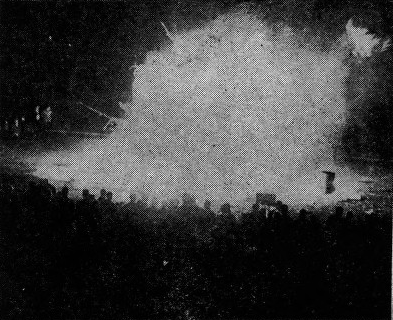Archive For The “S.B. Newton” Category

Only one football coach ever led both Lehigh and Lafayette to victories in the Rivalry.
In 1898, suffering through Parke Davis‘ final season, the head coach that had led Lafayette to the heights of natonal prominence brought in four different coaches to find a way to beat Lehigh in their second meeting at the end of the season.
One of those great football minds Davis brought in was Dr. Sylvanus P. Newton, a former Penn football player, Phi Beta Kappa scholar and expert football strategist.
Dr. Newton played a critical role for Lafayette in a slushy ice bowl in 1898, using the talents of their kicker, Ed Bray, and an ingenious way to deliver free kicks.
“Captain Best, the holder, and Bray, the kicker, scraped away the four inches of slush and snow so the ball could be placed on the ground for an attempt,” the book Legends of Lehigh/Lafayette tells us. “The visibility [on the 35 yard field goal] was so poor that the crowd at first was silent, not knowing exactly what had happened. Several minutes later, the word spread that the kick was good, and the crowd exploded for the amazing feat (or foot) of Ed Bray”.
The use of Newton’s placement kick – his own invention – “made such an impression upon those in charge at Lafayette that he was invited to be their coach the following fall,” Francis March wrote in the book Athletics at Lafayette College.
Read more »

For a very long period during the Rivalry, parades and bonfires have played a large part of the festivities, though their timing and purpose have changed over time.
And just like “smokers”, parades bonfires started out as athletic celebrations separate from the Rivalry, but ultimately became intertwined with the traditions of the game.
The tradition of the parade and bonfire dates from the times when cars were still rare, and most of the transportation into South Bethlehem came by the Lehigh Valley Railroad, whose station was only a few blocks from campus.
Bonfires celebrating athletic victories were not unknown in the late 1890s at both Lehigh and Lafayette, as well as parades for successful athletic teams. They may have been inspired by Harvard, Yale and Princeton, who were starting to celebrate their biggest victories over each others with large bonfires.
Read more »
